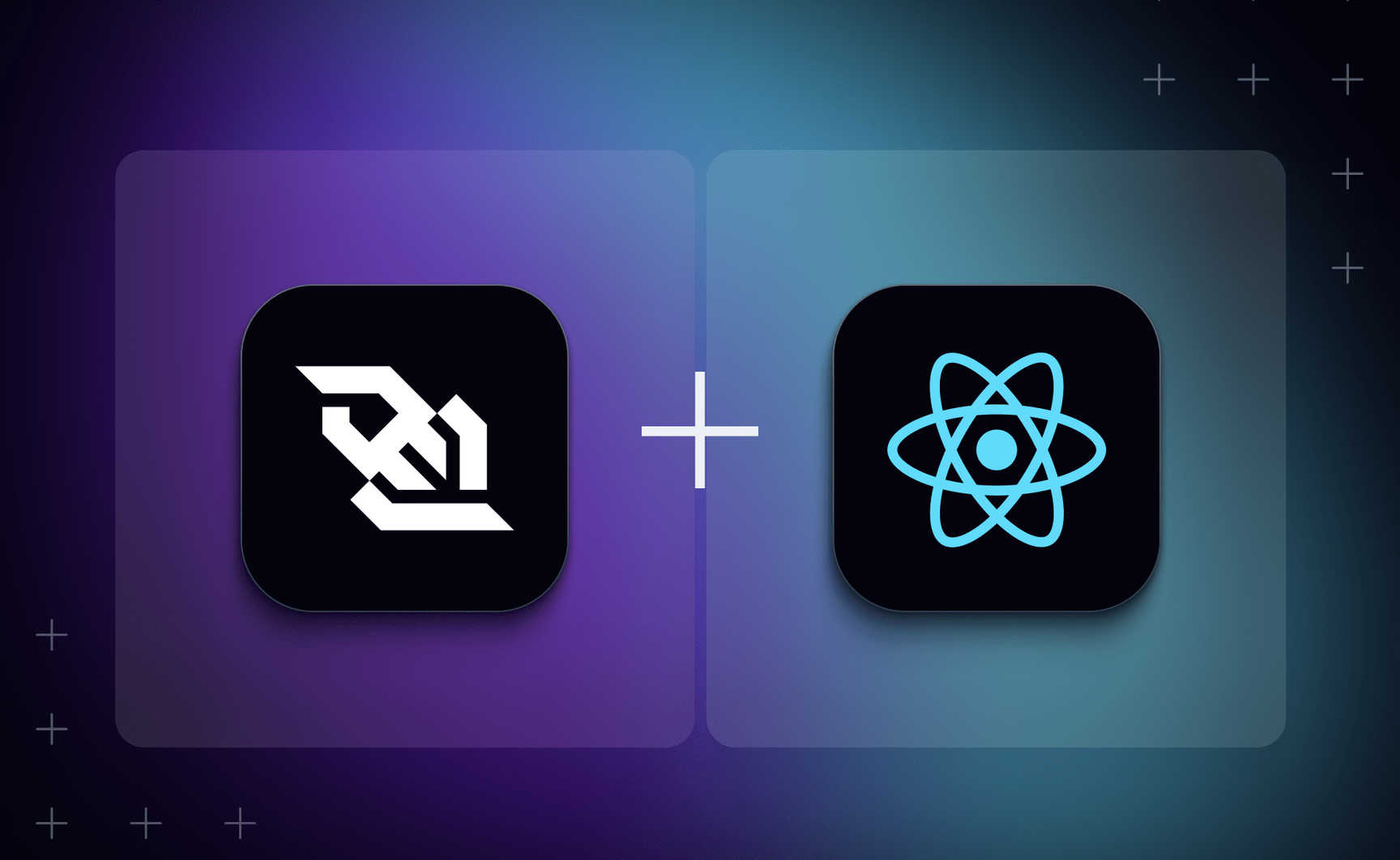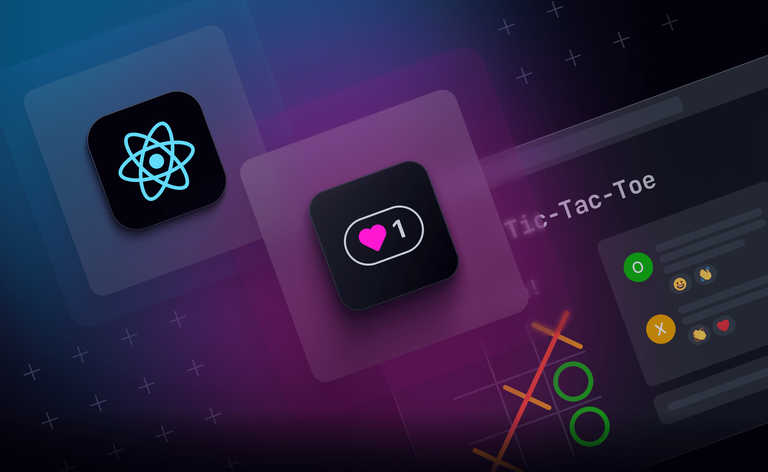As users now expect applications to provide live updates, realtime chats, and dynamic content, modern web development requires the ability to deliver realtime experiences and communication between users and servers.
WebSocket is a communication protocol that allows full-duplex two-way communication between a client and a server over a single TCP connection. The connection persists unless it is explicitly told to disconnect or in case of network or server failure.
WebSockets allow developers to fulfil the need to integrate realtime features in their applications. With WebSockets, React applications allow users to receive updates and notifications without any noticeable delay. Components can easily subscribe to WebSocket events and update the UI in response to incoming data or events, such as new chat messages or live notifications while maintaining thousands of connections.
Though WebSockets allow full-duplex communication with low latency, we have other alternatives available which can be used when a delay in communication is acceptable or bidirectional communication is not required. A few of these WebSocket alternatives include HTTP long polling, Server-sent events (SSE), and WebRTC.
- HTTP long polling: The client sends an HTTP request to the server and the request stays persistent until the server has data to send to the client or a timeout occurs. The client processes the received data and sends another connection request.
- Server-sent events (SSE): The client initiates a connection by sending an HTTP request to the server. The server keeps the request open and sends updates to the client whenever an event happens.
- WebRTC (Web Real-Time Communication): It is an open source project and collection of technologies and protocols that allow realtime peer-to-peer communication.
In this article we will explore the top WebSocket libraries that can be used in React applications and their pros, cons, and use cases. We'll also discuss the crucial factors to consider when choosing the best WebSocket library for your React project.
Top four WebSocket libraries for React
React useWebSocket
React useWebSocket is specifically designed for React applications which provide robust WebSocket integrations to React Components.
Pros:
- Idiomatic React integration: useWebSocket is specifically designed for React applications and provides idiomatic support to integrate WebSockets in React applications.
- State management: It provides built-in state management for socket connections.
- Socket.IO support: In addition to plain WebSocket, it also supports Socket.IO connections.
Cons:
- Limited to client side: React useWebSocket is a React library and requires Socket.IO or plain WebSocket implementation to add realtime functionality on the server side.
Use cases: React useWebSocket can be used to add realtime features like communication, server and client updates, and dashboards. However, this is a new library and doesn’t have data on what companies are currently using it.
Socket.IO
Socket.IO is a JavaScript library built on top of WebSockets that enables realtime communication between clients and servers. It is event-driven, meaning clients and servers can listen for and emit events according to their preferences. Socket.IO also provides compatibility with older browsers and devices.
Pros
- Automatic reconnection: Socket.IO periodically checks the connection between client and server and if the connection is interrupted, it automatically reconnects.
- Old browser support: Socket.IO supports HTTP long-polling which ensures that Socket.IO applications will work even in old browsers that do not support WebSockets.
Cons
- Server Compatibility: Socket.IO is designed to work with Node.js on the server side. This limits the choice of server technology if you are not using Node.js.
- Not guaranteed exactly-once messaging: Socket.IO provides an at-most-once guarantee, meaning that a message may be delivered zero or one times.
- Not designed specifically for React: Socket.IO can be used in a React app as a JavaScript library. However, It is not specially designed for React applications and provides less idiomatic support to integrate WebSockets in React applications.
Use cases: Chat applications, realtime player interaction, realtime data dashboards are a few use cases of Socket.IO. Companies that use Socket.IO include:
- Slack: Slack uses Socket.IO to enable realtime communication between users.
- Twitter: Twitter uses Socket.IO to enable realtime updates to user feeds, notifications, and search results.
- Google Docs: Google Docs uses Socket.IO to enable realtime collaboration between users on documents.
- Uber: Uber uses Socket.IO to enable realtime tracking of rides and driver availability.
SockJS Client
SockJS is a JavaScript library that provides a simpler API and support for a wide range of programming languages. It offers a fallback mechanism for WebSocket-like communication when WebSocket support is not available or reliable.
Pros
- Fallback mechanism: SockJS provides a fallback mechanism that switches to other transport protocols if WebSockets is not supported in a browser.
Cons
- Not compatible with plain WebSocket servers: SockJS client is an emulation of WebSockets and cannot connect to plain WebSocket servers. You need to implement SockJS at the backend to connect the client to the server.
- Not designed specifically for React: SockJS is a browser WebSocket library which is not specially designed for React applications. This could result in a less seamless integration as compared to libraries specially designed for React.
Use cases: SockJS can be used to develop realtime features in React applications including realtime communication, notifications, dashboards, live feeds etc. Companies that use SockJS include:
- Pipedrive: Pipedrive uses SockJS to provide realtime sales pipeline and contact information to the salespeople.
- IWB: IWB uses SockJS to enable realtime collaboration between its users.
WS
WS is a highly scalable, fast, and easy to use WebSocket library. It has a large active community on GitHub. can use WebSockets, HTTP long-polling, or WebTransport, depending on the browser and the environment.
Pros:
- Fast: WS is a fast WebSockets library.
- Fallback mechanism: WS can use WebSockets, HTTP long-polling, and Web transport depending on the environment.
- Large community: WS has a large community of users.
Cons:
- Difficult configuration: WS provides a lot of flexibility and it might be difficult to configure it when developing large applications.
- Not designed specifically for React: WS is a JavaScript library for WebSocket integration which can be used in React applications. However, it is not optimized for React, which may result in a non-idiomatic integration when compared to libraries like React useWebSocket.
Use cases: Like other libraries, WS can also be used for realtime communication, multiplayer interaction, live dashboards etc. FreeCodeCamp uses WS to add realtime features such as instant feedback and progress tracking to its platform.
Choosing the best WebSocket library in React
Choosing the best WebSocket library depends on your needs. Here are a few key considerations that can help you to pick the best library for your project:
- Project requirements: Every project has its own requirements. For example, you might be looking to prioritise performance, or limit your project's complexity. Additionally, certain libraries are more suited to certain use cases. For instance, Socket.IO is excellent for chat apps, while React useWebSocket simplifies realtime dashboards.
- Library limitations: Each library comes with its limitations - as we have explored above such as the challenge of configuration in WS and the at-most-once message guarantee in Socket.IO. It is essential to not only consider these limitations, but also the trade-offs that you might have to make between things such as browser support, error handling, and ease of use.
- React compatibility: Some developers prefer WebSocket libraries that are specifically designed for their tech stack to gain better control over its implementation. React useWebSocket is specifically designed for React, whereas libraries such as Socket.IO and WS aren’t.
- Library community and maintenance: Active communities and regular updates indicate a maintained library. Consider the library's GitHub repository, support channels, and resources available online. These resources will help you debug your code if you get stuck. In the case of Socket.IO, SockJS, and WS, all three libraries have active communities on GitHub, each with a substantial number of stars: Socket.IO with 59k stars, SockJS with 8.3k stars, and WS with 20k stars. Active community reflects ongoing efforts to improve these libraries, ensuring an enhanced developer experience over time.
Ably: An easier way to deliver realtime experiences with React
Ably provides a serverless WebSockets solution for building realtime experiences. It is a highly scalable and reliable realtime infrastructure platform which offers easy to use client and server APIs that allow developers to develop applications that communicate in realtime. For React, Ably offers hooks to streamline the process of realtime communication in React applications without having to worry about infrastructure implementation.
Companies like MobyMax and PeopleFun trust Ably to offer realtime experiences to their users because of its reliability, scalability and easy integration.
Using Ably for implementing realtime features is as simple as installing it, subscribing to a channel and publishing realtime messages. Try it for free today!
Conclusion
WebSockets, with their ability to enable full-duplex, bi-directional communication have become a go-to solution for building realtime experiences. The libraries outlined allow the integration of WebSockets in React applications - but they each come with their advantages, and disadvantages. It is important to evaluate which is the right one - and if you should consider using an alternative approach, such as Ably.




